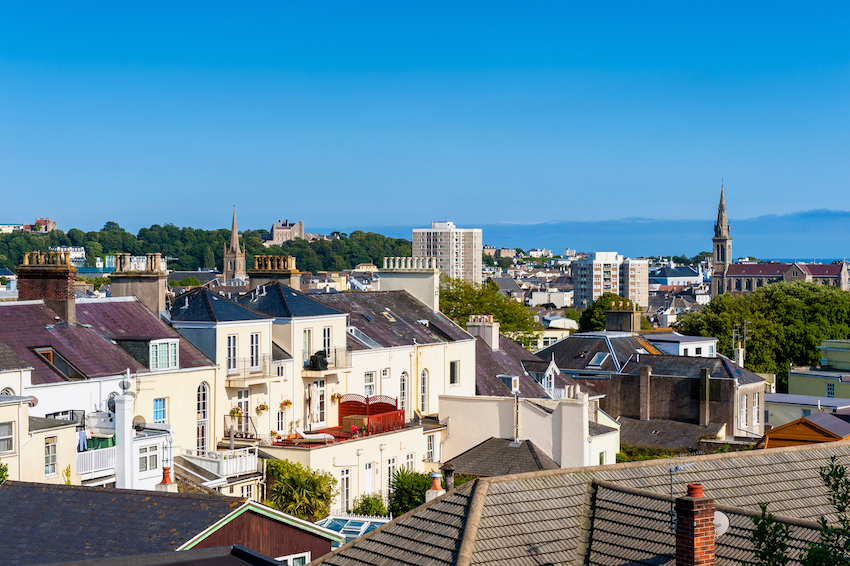


3,750 new homes to be built in the next three years, inward migration cut in half and some 'greenfield' land released for building... these are some of the main points to come out of a new government report published ahead of the next Island Plan.
The report was released by the Environment Minister, Deputy John Young, and sets out "the vision, objective and planning assumptions" for the new plan, ahead of a 12-week publication consultation exercise.
Earlier this year, the Environment Minister said that, instead of a 10-year plan, he would be publishing a 'bridging plan' to cover the years 2022-2024 due to the uncertainties caused by the pandemic.

Pictured: Deputy John Young will be releasing a 'bridging' Island Plan instead of the usual 10-year version.
The report suggests that at least 3,750 homes should be built by 2024 to cope with the housing demand and an expected 900 additional people coming to the island every year.
“These figures around migration and population over this short-term plan period are not Government targets, nor are they aspirations – they are our best-informed judgement of Jersey’s likely direction over the next few years,” Deputy Young said.
“We are living in a time of uncertainty. We cannot be sure what the impact of Brexit and covid-19 will be and that is why we’re bringing forward a shorter bridging Island Plan now, rather than waiting even longer to develop a long-term Island Plan.”
Last week the government published a Migration Policy which it said gave it the tools to better control population numbers, once it had been decided what the island wanted - but that wouldn't be done until 2022.

Pictured: Most of the 3,750 homes needed by 2024 should be built in town, or other built-up areas, the new report says.
The ‘Spatial strategy’ proposed in the report states that most of the new developments should be built in town and other parts of the island that are already developed, including near Parish halls, which might lead to greenfield land having to be released.
Meanwhile the undeveloped coast and countryside should be protected.
Concentrating buildings in St. Helier – and potentially reclaiming more land – was considered the best solution to Jersey’s development needs according to the majority of islanders who took part in a three-month consultation on what was then the Island Plan 2021-2030 last year.
Questioned about how many of the new developments would be built in town, the Environment Minister and Kevin Pilley, the Director, Planning Policy, Planning and Building Services, refused to give a number.
“I wouldn’t be party to what you would call ‘town cramming’,” the Minister said. “That’s not what we’re about, we’re trying to find ways in which we can accommodate those additional residents but doing it in a way which means that the quality of life is decent.”
Pictured: The Environment Minister assured he wanted to address the shortage of “open space provision and provision of community amenities.
Deputy Young said that he, as well as other States Members, were keen to address the shortage of “open space provision and provision of community amenities."
“I believe that we’ve got a shortage and if we are to accommodate additional residents in our town area, we need to rectify that situation,” he said.
“And therefore, that’s part of the Island Plan and the objectives that I’ve certainly made clear and expect to happen. I think that other members will share that and so they’ll want to see those elements too in the plan.”
In addition, the Environment Minister wants to see “improvements to use of roads and public realm space” to make the town built-up area “a more friendly place for people to walk and cycle”.
Mr Pilley said that more work would be done to determine which sites could be used for development, taking into account “the quality of the living environment."
“We are looking at the capacity of different parts of St. Helier to be able to accommodate new development,” he explained. “That’s looking at the existing character of those parts of town and also the adequacy of the existing infrastructure that exist there in terms of things like provision of open space and education facilities and those sorts of aspects.

Pictured: Roads and streets could be improved to make more way for walkers and cyclists.
“The Minister has also made reference to another piece of work that we’re doing to look at what we call the public realm, that’s a network of roads and streets in St. Helier to look at how they might be able to provide opportunity to support things like much more walking and cycling and make the town environment more liveable for both existing town residents and for new residents of St Helier.
“So it isn’t just about numbers, it’s also about the quality of the living environment as well.”
The draft Island Plan is set to be published for 12 weeks consultation in March 2021.
Comments
Comments on this story express the views of the commentator only, not Bailiwick Publishing. We are unable to guarantee the accuracy of any of those comments.